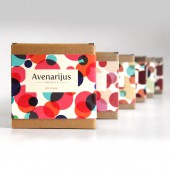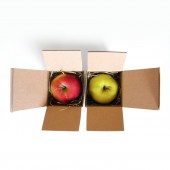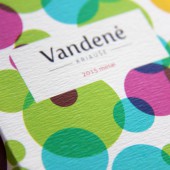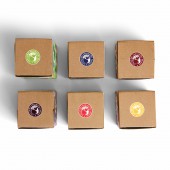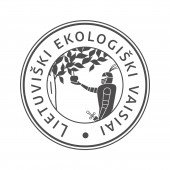Lithuanian Fruits Packaging by Edmundas Jankauskas |
Home > Winners > #41498 |
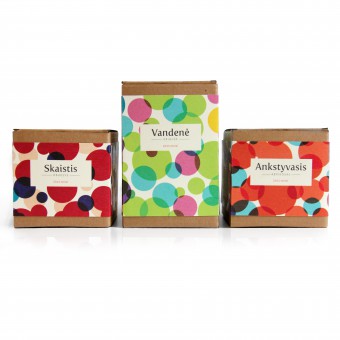 |
|
||||
| DESIGN DETAILS | |||||
| DESIGN NAME: Lithuanian Fruits PRIMARY FUNCTION: Packaging INSPIRATION: Lithuania has rich history of pomology (fruit breeding) which dates back to 16th century. Despite this interesting fact, lithuanian breeds are barely known in Lithuania, not to talk about other countries. It was rather interesting for me to study our history and make a project that could help spread word about lithuanian fruits and breeds. UNIQUE PROPERTIES / PROJECT DESCRIPTION: Purpose of this work was to analyse variety of Lithuanian fruit breeds, their distinctive characteristics and create packaging, which would represent their unique properties, be effective and successful in the market. A unique colour is given for every breed, it's unique properties (taste and structure), minerals, vitamins and nutritional values. These colours are combined between and placed on four sides of packaging. That way every packaging becomes unique in it's colours and perfectly represents each breed. OPERATION / FLOW / INTERACTION: A lot of attention was devoted to tactilic experience of user and how one feels when touching and opening the package. So for etiquettes a special textured paper was chosen and inside the package hay is used. That way when user touches and opens package for first time he is greated with a pleasant touch and smell experience of nature and fresh garden of fruits. PROJECT DURATION AND LOCATION: Project was done and completed in four months since February 2015. FITS BEST INTO CATEGORY: Packaging Design |
PRODUCTION / REALIZATION TECHNOLOGY: For the box package corrugated cardboard and hay is used. Hay is inside box and helps to keep fruits still. It also enriches smell of natural fruits. For the etiquettes I chose textured paper, which has a very similar texture to apples and pears and that gives a more natural touching sense. SPECIFICATIONS / TECHNICAL PROPERTIES: Most of the boxes are in size of 75 mm (square). Bigger boxes for pears are 115 mm in height and 75 mm in depth and width. TAGS: fruits, lithuanian, apples, pears, apricots, cherries, packaging, hay RESEARCH ABSTRACT: Research was made by collecting usefull information from Institute of Horticulture, many specialized books (some of them from 18th century), breed databases and by contacting fruit growing gardening specialists. CHALLENGE: It was very important to summarise historical development of fruit breeding in Lithuania and express that in very understandable way. Another objective included visualizing each breeds' unique properties and make it readable and easy-to-use. ADDED DATE: 2015-06-17 09:55:46 TEAM MEMBERS (1) : Project supervisor: prof. Audrius Klimas IMAGE CREDITS: Edmundas Jankauskas, 2015. |
||||
| Visit the following page to learn more: http://bit.ly/1en1jor | |||||
| AWARD DETAILS | |
 |
Lithuanian Fruits Packaging by Edmundas Jankauskas is Winner in Packaging Design Category, 2015 - 2016.· Press Members: Login or Register to request an exclusive interview with Edmundas Jankauskas. · Click here to register inorder to view the profile and other works by Edmundas Jankauskas. |
| SOCIAL |
| + Add to Likes / Favorites | Send to My Email | Comment | Testimonials | View Press-Release | Press Kit |

